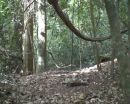(Press-News.org) ANN ARBOR—Lake Erie has become increasingly susceptible to large blooms of toxin-producing cyanobacteria since 2002, potentially complicating efforts to rein in the problem in the wake of this year's Toledo drinking water crisis, according to a new study led by University of Michigan researchers.
Since the detection of the toxin microcystin left nearly half a million Ohio and Michigan residents without drinking water for several days in early August, discussions of ways to prevent a recurrence have largely focused on the need to reduce the amount of phosphorus fertilizer that washes off croplands and flows into western Lake Erie to trigger harmful cyanobacteria blooms.
In a study published online Oct. 8 in the journal Water Resources Research, scientists from U-M and the National Oceanic and Atmospheric Administration conclude that microcystin-producing cyanobacteria in Lake Erie are becoming more sensitive to phosphorus and that reductions may have to cut far deeper than recently proposed targets.
"Our results suggest that current phosphorus loading targets will be insufficient for reducing the intensity of cyanobacteria blooms to desired levels, so long as the lake remains in a heightened state of bloom susceptibility," said lead author Daniel Obenour of the U-M Water Center. Other authors are Don Scavia of U-M and Andrew Gronewold and Craig Stow of the National Oceanic and Atmospheric Administration.
The paper is a technical analysis of the uncertainties involved in computer modeling studies that use the amount of phosphorus entering Lake Erie in the spring to predict the size of late-summer cyanobacteria blooms, which have grown larger since the mid-1990s.
Though the total amount of phosphorus entering the lake seems to be the best predictor of bloom size, that variable alone doesn't fully explain the observed size increase during the study period examined by the team, 2002 to 2013.
The researchers used a computer model to determine whether rising levels of a special form of phosphorus called dissolved reactive phosphorus or DRP, which is more readily absorbed by algae, could explain the trend toward increased bloom susceptibility. It didn't.
They also looked at water temperatures in Lake Erie. In coming decades, warming waters are expected to exacerbate the lake's harmful algal bloom problem. But from 2002 to 2013, late-summer Lake Erie surface temperatures did not increase significantly, suggesting that some other factor is at work, according to the researchers.
One possibility is that the spread of invasive quagga and zebra mussels in the lake has promoted the dominance of microcystin-producing cyanobacteria and has altered the lake's phosphorus cycle. Recent U.S. Geological Survey studies in western Lake Erie suggest a decrease in zebra mussel numbers but an increase in quagga mussels and total mussel abundance over the last decade.
Quagga and zebra mussels shun toxin-producing Microcystis cyanobacteria and feed instead on other species of phytoplankton at the base of the lake's food chain, including algae.
"We tested to see if the increase in the DRP fraction could be the cause, and it did not pass the test. It also does not look like water temperature is driving the increased susceptibility. We're thinking it may have been the increase in mussels," said U-M aquatic ecologist Scavia, co-author of the study and director of the Graham Sustainability Institute.
Other potential explanations for the reported trend in bloom susceptibility are increasingly calm summer weather conditions, which can also promote cyanobacteria dominance, and a growing reservoir of Microcystis seed colonies at the bottom of Lake Erie.
Whatever the cause, the finding of increased susceptibility suggests that proposed management targets for reduced phosphorus loads in Lake Erie may not go far enough.
In February, the International Joint Commission called on the governments of the U.S. and Canada to adopt new targets for Lake Erie phosphorus levels to curtail harmful algal blooms. The IJC recommended that the total phosphorus target for Ohio's Maumee River, which drains agricultural land and empties into western Lake Erie, be cut 37 percent during the spring.
The IJC said those reductions would "reduce the frequency and severity of harmful algal blooms in the western Lake Erie basin to an acceptable level." But Obenour, Gronewold, Stow and Scavia conclude that because of the increased sensitivity of the Lake Erie system, even the ambitious reductions urged by IJC will likely be insufficient.
"As long as the lake remains in this heightened state of susceptibility, this problem is likely to persist. That means we need to better understand what is driving the increased susceptibility and whether it can be controlled, or if deeper phosphorus reductions are needed," Scavia said.
INFORMATION:
The Water Resources Research paper is titled "Using a Bayesian hierarchical model to improve Lake Erie cyanobacteria bloom forecasts." Gronewold and Stow are at NOAA's Great Lakes Environmental Research Laboratory in Ann Arbor.
The project was funded by the Great Lakes Restoration Initiative's SOAR (Synthesis, Observations and Response) Project, the U-M Water Center, the Cooperative Institute for Limnology and Ecosystems Research and NOAA. The work is part of a partnership with NOAA's National Ocean Service and its ongoing collaborative work on understanding and forecasting harmful algal blooms.
Water Resources Research is a journal of the American Geophysical Union. Abstract: http://onlinelibrary.wiley.com/enhanced/doi/10.1002/2014WR015616/
As our ability to assess the pandemic risk from strains of influenza virus increases with the latest scientific developments, we must not allow ourselves to become complacent that the most substantial threats have been identified, argue an international consortium of scientists.
Influenza pandemics arise when a new virus strain – against which humans have yet to develop widespread immunity – spreads in the human population. There have been five such pandemics in the past 100 years, the worst of which – the 1918 Spanish Flu – cost 50 million lives ...
"Imagine a heavy ball rolling on an elastic net: what happens?" asks Daniele Fausti, researcher at Elettra Sincrotrone of Trieste and the University of Trieste. That's how Fausti explains the concept of "dressing" in physics: "the ball's movement is slowed down because each movement is accompanied by a deformation of the net: the sphere no longer behaves like a free sphere (i.e., that rolls on a rigid plane), but like a sphere that is 'dressed' by the net's deformation". Why is this "dressing" concept so important? "Because it's what physicists believe explains superconductivity ...
A UNIVERSITY of Huddersfield researcher has shown that tiny tweaks to the soundtrack can make TV adverts much more memorable, increasing their commercial impact.
The necessary adjustments are imperceptible to the ear and eye. But Andy Rogers – in the last stages of his PhD project at the University – has proved that there are considerable perceptual improvements if the synchronisation between the music and the visual content of the commercial is altered by just tenths of a second.
Joined by his PhD supervisor, Dr Ian Gibson, Andy has just presented his ...
VIDEO:
This video shows a chimpanzee who has constructed a tool with which to investigate a camera (Nimba mountains, Guinea).
Click here for more information.
West African chimpanzees will search far and wide to find Alchornea hirtella, a spindly shrub whose straight shoots provide the ideal tools to hunt aggressive army ants in an ingenious fashion, new research shows.
The plant provides the animals with two different types of tool, a thicker shoot for 'digging' and a more ...
COLUMBUS, Ohio—Our view of other solar systems just got a little more familiar, with the discovery of a planet 25,000 light-years away that resembles our own Uranus.
Astronomers have discovered hundreds of planets around the Milky Way, including rocky planets similar to Earth and gas planets similar to Jupiter. But there is a third type of planet in our solar system—part gas, part ice—and this is the first time anyone has spotted a twin for our so-called "ice giant" planets, Uranus and Neptune.
An international research team led by Radek Poleski, postdoctoral ...
This news release is available in German. Public spending appears to have contributed substantially to the fact that life expectancy in eastern Germany has not only increased, but is now almost equivalent to life expectancy in the west. While the possible connection of public spending and life expectancy has been a matter of debate, scientists at the Max Planck Institute for Demographic Research (MPIDR) have now for the first time quantified the effect. They found that for each additional euro the eastern Germans received in benefits from pensions and public health ...
VIDEO:
Fruit fly border cells form clusters of six to eight cells, which display directional migration during oogenesis. Migration of border cells in egg chambers can be examined in detail by...
Click here for more information.
Cell migration is important for development and physiology of multicellular organisms. During embryonic development individual cells and cell clusters can move over relatively long distances, and cell migration is also essential for wound healing and many ...
Researchers from the University of Sheffield have found vital new evidence on how to target and reverse the effects caused by one of the most common genetic causes of Parkinson's.
Mutations in a gene called LRRK2 carry a well-established risk for Parkinson's disease, however the basis for this link is unclear.
The team, led by Parkinson's UK funded researchers Dr Kurt De Vos from the Department of Neuroscience and Dr Alex Whitworth from the Department of Biomedical Sciences, found that certain drugs could fully restore movement problems observed in fruit flies carrying ...
CORVALLIS, Ore. – Since the first undersea methane seep was discovered 30 years ago, scientists have meticulously analyzed and measured how microbes in the seafloor sediments consume the greenhouse gas methane as part of understanding how the Earth works.
The sediment-based microbes form an important methane "sink," preventing much of the chemical from reaching the atmosphere and contributing to greenhouse gas accumulation. As a byproduct of this process, the microbes create a type of rock known as authigenic carbonate, which while interesting to scientists was ...
Just 14 per cent of the population has an Advance Directive, or "living will", detailing their end of life treatment and care preferences, according to an article led by QUT Australian Centre for Health Law Research director Professor Ben White.
This research is from a joint University of Queensland, QUT and Victoria University study, supported by the Australian Research Council in partnership with seven public trustee organisations across Australia.
An Advance Directive is a legal document in which a person specifies what treatment or end of life care they want, when ...



